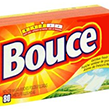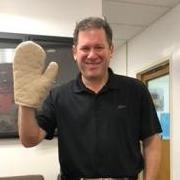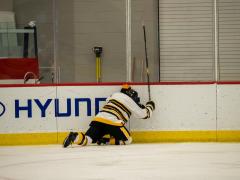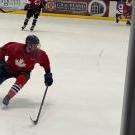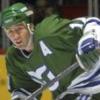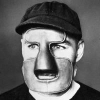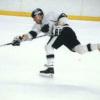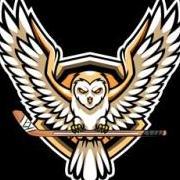Slate
Blackcurrant
Watermelon
Strawberry
Orange
Banana
Apple
Emerald
Chocolate
Marble
Slate
Blackcurrant
Watermelon
Strawberry
Orange
Banana
Apple
Emerald
Chocolate
Marble
Leaderboard
Popular Content
Showing content with the highest reputation on 07/11/18 in all areas
-
2 pointsI hear @DKMiller3356 gets injured browsing gear...
-
2 points@customskateworks will be attending SummerJam and will show our attendees the product.
-
2 points
-
1 pointOne of our regular customers recently bought a pair of custom FT1 skates and is frustrated that the toe cap is already getting beat up badly in such a short period of time. Lots of little scratches and scuffs. Nothing major, but he apparently has OCD and it's driving him insane. He asked if I could buff or polish out the scratches and while I think that shouldn't be an issue I have never tried doing such myself on a hockey skate toe cap. I tried to explain to him that wear and tear will happen, since it's hockey, but he insists his old Bauers always looked like new and didn't wear as poorly as these new skates. Seems like he is blaming CCM for their selection of plastic which he says is "too soft." Rather than debate with him endlessly. Does anyone have some input? Can I do what he is asking with 3000 grit sandpaper and a rotary buffer? Is there another option? Gracias!
-
1 pointTry a polish made for plastics with the buffer first. Wet sanding and polishing is more for leveling scratches or bringing cloudy headlamps back to clarity. Not sure how it would work on the skate toe cap. Other option is try it on an old beat up skate and see what the results are like.
-
1 point
-
1 pointCongratulations! I know a guy who was a paramedic and turned it into an awesome 35+ year career. The job can be stressful so make sure you take care of yourself and your partners. Hopefully you'll work for a outfit that invests in their staff and has a good CISM program in place. Good luck and go save lives!
-
1 pointIf you're looking for more rib protection, you might have a better time just getting padded base layers, instead of trying to track down old gear.
-
1 point
-
1 pointI've done +2 oversize a few times. There's literally no room for error. Nowadays, I use a Custom Skateworks RAT-300 for tricky mount jobs/install clean holes. If you aren't up for it, have him reach out to me.
-
1 pointAs you might imagine, this is a rhetorical and specifically didactic question. I recently had two goalies (one Novice, one Peewee) go through some stick sizing issues: the 12 year-old was using a larger stick than I would even consider, and the 9 year-old had been given (with direction) the same size paddle as Miikka Kiprusoff. Given these rather incredible situations, I thought they presented an ideal opportunity to address the problem of how to select goalie sticks. Let's work backwards... Unlike player sticks, there are two relevant vertical measurements on any goalie stick: 1) overall height to the top of the shaft, and 2) the height of the paddle, which is the height in inches marked on the shaft (usually 25" or more for retail senior sticks). And while, as with player sticks, the overall height can be decreased by cutting down the shaft (at a small decrease in actual flexibility) or increased by adding a butt-end extension (at a small increase in effective flexibility), the paddle height cannot be easily adjusted. With older, predominantly wooden sticks it was possible to sand, shave, or even cut down a paddle, but this is not practical with foam-core wood sticks, wood sticks with fibreglass wraps, or composite sticks generally. In what position do modern goalies make the vast majority of stick-saves?-- the butterfly, obviously. It is only a very old-school goalie who makes a standing stick-save these days, and there is general agreement that with low shots, which can easily be tipped or skip up off the ice, the ~3 3/8" tall stick-blade should be backed up with the 11" tall pad in almost any situation. Thus, the stick should be sized for the goalie's butterfly, and in particular, for the goalie's preferred stick-blade position and angle, and preferred blocker hand position while in the butterfly. It's also worth remembering that the lie of the stick will play a role throughout, though goalies are typically limited to 14 and *occasionally* 13 lies at retail. This means that paddle height does not scale linearly with the goalie's total height, but with a complex set of variables: shoulder width; shoulder-to-elbow and elbow-to-wrist measurements; height from knees to shoulders, plus the height of the pads' knee-blocks; comfortable range of movement in wrist, elbow, and shoulder; the personal preferences of stick-blade angle (generally between 3-iron and 9-iron golf club heads) and blocker hand position in the butterfly; the goalie's general preferences for active or passive butterfly; and so on. This is not to say that choosing sticks is impossible, but that it is complex from a measurement perspective and surprisingly simple from an actual perspective. First, ignore all marked measurements of paddle height. These are so esoteric as to be basically useless. Different companies use different standards, and companies sometimes change standards; there is also no reliable standard of measurement, though several are claimed. The only thing that matters is the goalie's comfort and range of movement with the stick, not the number printed on the side. In a pinch, if replacing a broken or lost stick, you may be able to select the same brand, make, and model of stick using the printed measurements, but even this is not 100% accurate. Second, ignore all distinctions relating to age or level of play: 'junior', 'intermediate', and so on. Any choices made in features, design, price-point, and so on should be made *only after* the correct range of sizing has been determined. To find the ideal paddle height for any goalie, simply have the goalie put on pairs of skates, pads, and gloves (not even necessarily their own) in a shop, drop into an 'active butterfly' position on the floor (that is, with the glove and blocker held out from and ahead of the body, with the stick in front of the pads), and start handing the goalie some sticks. At this stage, you are simply trying to eliminate paddles that are too tall. Paddles that are too tall will produce one or all of the following symptoms: 1) the blocker hand and elbow will be pushed too high, up toward and even *above* the shoulder, and back toward the plane of the shoulder -- an uncomfortable and biomechanically awkward position; 2) stick-blade will be extended too far in front of the goalie and tipped too far backward, potentially into an almost flat (and thus useless) attitude; 3) the stick-blade may be pushed to the goalie's left side, both displaced form the five-hole and possibly tipped up onto the heel of the blade. That last possibility is especially vexing: when the stick-blade is left with only the heel on the ice, the goalie might as well be attempting to stop shots upside-down, using the butt-end of the stick. This heel-only attitude is also a dangerous moment of transition in switching from blade to paddle-down: anyone remember the Cup-winning goal Patrick Kane put past Mike Leighton? Most goalies, presented with sticks in the above method, will select paddles that seem remarkably short by conventional standards. This is born out by the fact that many professional goalies use custom sticks that are, in fact, shorter than any senior sized sticks on the retail market. Miikka Kiprusoff, Dwayne Roloson, and Evgeni Nabokov, for example, all use paddle heights that are 1" to 3" shorter than the shortest senior retail paddle heights. Unbelievably, the Novice goalie I'm coaching had been instructed by another goalie coach to switch to a 24.5" Warrior stick -- which is the same size that Kiprusoff uses at 6'1"! (Spurious reasoning, in the abstract, but the absurd disparity in overall height helps drive the point home.) Once your goalie has found a good range of paddle heights, the next test is the range of stick movement. Remaining in the butterfly, the goalie should be able to move the stick in continuous, back-and-forth arcs, from the toe one of back to the other, without having the heel or toe of the stick come off the surface, nor -- and this is crucial -- being forced to lean too far or rotate the blocker-side shoulder excessively in reaching to the glove-side toe. This will eliminate some paddles that are too short, further narrowing the range of paddle sizes. The goalie should then experiment with the remaining range of sticks in a deep, shot-ready stance: the stick-blade firmly on the surface, the body in a deep crouch with knees bent and close together, ready to drive down into the butterfly. From this shot-ready stance, the goalie should perform butterflies and recoveries as frequently and as dynamically as possible, including some time in the VH position (aka one-knee-down, split-knee, post-leg-up/PLU, etc.) to get a feel for the stick. This stage will eliminate a small number of paddle heights that are too short, but the goalie should always remember that actual *saves* with the stick will be made almost exclusively in the butterfly, making that the primary criterion of sizing. Frequently, goalies who have first selected a paddle-height in the butterfly will find themselves in a deeper crouch in their shot-ready stance than they might have expected; this is entirely natural. At this interim stage, the goalie should also experiment with movement in and out of the paddle-down position, since some sticks offer paddle and shaft configurations and heel profiles that make this more comfortable, then stand up and make some choices related to puck-handling: curve, stick flexibility (including overall shaft height, so that any amount needing to be cut down, thus stiffening the shaft), the grip coating (or lack thereof) on the shaft and upper paddle, and so on. The goalie should be able to smoothly transition to and from paddle-down and standard butterfly positions, and to and from a puck-handling grip (with the blocker sliding up toward the top of the shaft), using one or both of the traditional underhand grip with the catching glove and the 'Turco' overhand grip. Finally the goalie should *briefly* consider thee few remaining stick options while in a relaxed, upright stance used for tracking the puck in non-threatening situations. Invariably, however, this method of sizing will mean that in a relaxed upright stance, the goalie's stick-blade will be off the surface -- well above it, in fact, or resting only on the toe of the blade. That last point is worthy of some concluding discussion. Many people -- goalies, goalie coaches, coaches generally, and the hockey laity -- subscribe to the a maxim that a goalie's stick must always be 'on the ice'. At first glance, this seems fairly sensible, and especially so for young goalies who face a disproportionate number of ice-level scoring chances. However, any observation of elite goalies will illustrate that most spend the majority of any game with their stick-blades off the ice, or one the ice *but* in a resting position. In particular, almost all elite goalies will use an upright, relaxed stance with the stick-blade well above the ice when tracking the puck inside the defensive zone in non-threatening situations (e.g. perimeter play or cycling). Clearly, then, the 'conventional wisdom' of that maxim needs to be qualified. It is not that 'a goalie's stick should always be on the ice,' but rather that a goalie's stick should always be on the ice when in a shot-ready stance and butterfly -- that is, when a shot is anticipated or actually in-flight, and the goalie is ready to make a save. That said, many people follow the first part of that maxim with fundamentalistic zeal. When they see a goalie in a relaxed stance with the stick-blade off the ice, they immediately prescribe a much taller paddle. As a result, when they (or their peers) go shopping for a new stick, they will attempt to size the paddle not to the goalie's actual butterfly or even the shot-ready stance, but to that same relaxed, upright stance. Thus, the common criteria for goalie stick selection are essentially irrelevant to the actual use of the stick. The problem is compounded by the relative scarcity, at retail, of shorter paddles, and the problem of emotionally-volatile labels like 'junior' and 'intermediate'. Young goalies who want 'big kid sticks' often end up with absurdly oversized paddles: hence a 12 year-old using a larger stick than I would even consider, and a 9 year-old using the same size paddle as Miikka Kiprusoff. Even when thoughtful and/or well-informed shoppers go looking for goalie sticks, they will often find that there are few options available below 24.5" in paddle height (relatively speaking), and often *none* below 21". Even when the marked sizes are ignored, most goalies in the younger divisions (Tyke, Novice, and Atom) have a very hard time finding sticks, and an even harder time finding sticks with good feature sets and attractive graphics in smaller sizes. For example, the only place I've recently seen sticks in the 16" to 20" range were some straight-blade, bare-bones wood goalie sticks at Canadian Tire -- and they had none of the gloss and glamour of the composites starting at 22.5", which also weighed significantly less. There is no problem with a young goalie using a straight-blade stick -- indeed, I'd encourage it! -- but that's often easier said than done when kids see the glow of new product and feel the differences in quality and especially weight. Ultimately, what I'd like to see is a wider selection of high-quality sticks from 16" and up being manufactured and made available at retail, and the total elimination of age-biasing ('jr', 'int', etc.) on goalie sticks. Until then, goalies and goalie-parents will have to look a little harder to find properly sized sticks, be prepared to turn a blind eye to that sort of labelling, and be prepared to be a little less able to invest in the latest technologies and looks.
-
1 pointWe're not really disagreeing. Anytime you change something about your skates (or do anything athletically that's new to you, more generally), the muscles involved will work differently and in ways that are new to them and they'll get sore in places reflecting those differences until they adapt. As they become used to it, the soreness goes away. It's not that they don't also become stronger in the process; but the critical difference between being able to balance on an edge without support and not being able to isn't really a matter of the strength of those muscles, per se. If it were, in principle, you'd also be able to improve your skating without laces by exercising those same muscles on a weight machine designed to provide resistance in every plane of ankle movement. That's not the case, and all the targeted ankle-strength resistance training in the world wouldn't enable you drop eyelets and skate as well as lacing them up, because what you're really doing with this kind of thing is training your brain and your brain-muscle connection, rather than strengthening muscles, exactly as you describe right here: This is all I'm saying: the critical component here is neurological learning rather than increased muscular strength of the muscles involved.
-
1 pointTake it from someone who comes from as far from that as anybody could ever get, that the less ankle support you can practice with the better it will be for your skating. The sooner in your development you do it, the better, because your skating won't have to get worse first without the support before you see benefits. For someone my age who relied on a lot of lateral ankle support from day one, it would probably not be possible to relearn to skate without support and ever expect to skate much better than someone who first learns to skate in his 50's. I'm amazed at your description, because if I took out my laces, I would LITERALLY not be able to walk across the dressing room, let alone get on the ice to try "careful stops" NFW. It's not that you can skate better without laces; it's that if you learn to skate without a lot of lateral support, you can get onto and get more out of your edges in every respect. You can also flex both your knees and your ankles more, and probably open your hips more, too. But you don't go right to lace-free skating; and that's not the way you should try to incorporate the idea into your training. What you want to do is reduce the lateral support gradually and only after you're already able to skate as well as possible (for you) at your current support level, or if you haven't started yet, at the first support level that you drop down to from whatever you're most comfortable with now. Lace-free would be the final level but most of the benefit is already reached by the time you're skating comfortably and playing with the top one or two eyelets not laced up. There's a guy who played for the Kings in the 80s (Daryl Evans) who coaches and plays in AHL Alumni games with his tongues flopping forward and curling over his toe caps. We get it, Daryl: you can skate without laces; you can tuck your tongues into your skates and loosely tie a few eyelets and also avoid a stupid injury from catching a pass on the bare foot. Just tie a little looser and/or skip an eyelet at the top and try to increase the loosening once your comfortable at the previous step. Some of us have had this discussion in many different contexts, but it's not really "ankle strength" that's at issue. The Muscles are involved but it's really the neuromuscular connection between brain and muscles that provide critical balance at different levels. When your nervous system has to fire the small muscles near your ankle regularly, it lays down neural pathways that become thicker and stronger, involving more nerves in a larger network communicating signals to and from your brain to balance you. That's the main change that occurs in body tissue, not the muscles in your legs and feet, What's usually referred to as "strong ankles" in connection with skating are more accurately described as well-coordinated ankles. Try loosening up a bit for part of practice sessions until you feel comfortable enough that way to play a game; then continue repeating that process by going progressively looser as you get more and more comfortable with less lateral support. I'm not a bad skater with my taped-locked ankles; but I'd be a much better skater today if I'd hung in there without taping up at 14 as a shortcut to faster improvement than I was making at that time without tape, taking my time to build up to skating well with less support. No. 10 in Maroon. https://www.dropbox.com/home/red vs white 10-23-16?preview=20161023_210649.mp4
-
1 pointTo the OP. In some regards yes, CCM is giving the customer more for less. The Ribcor 68k and Tacks 9090 are fantastic skates at an extremely reasonable price. Does that translate into to higher sales, maybe, maybe not. Someone like CCM who has very little share of the skate market can gain some of that back by offering skates like that. Only problem is skates have fit characteristics. So while the 68k may give you more skate for the money, the Bauer with less features may fit better.
-
1 pointI'm a paramedic now! 🚑🚑🚑🚑🚑 (Though must wait on "official" word from the national registry, I have now passed both written and practical.)
-
0 pointsJuly 15th is the last day you can order a pair of skates without holder + steel according to my local pure hockey.
